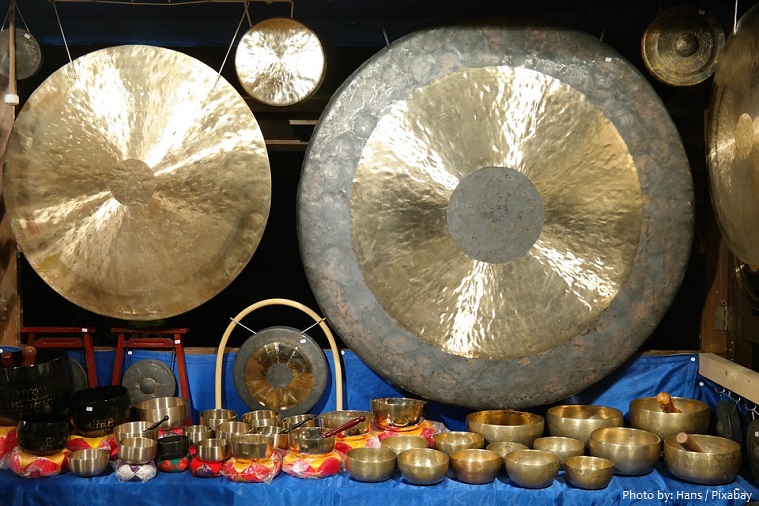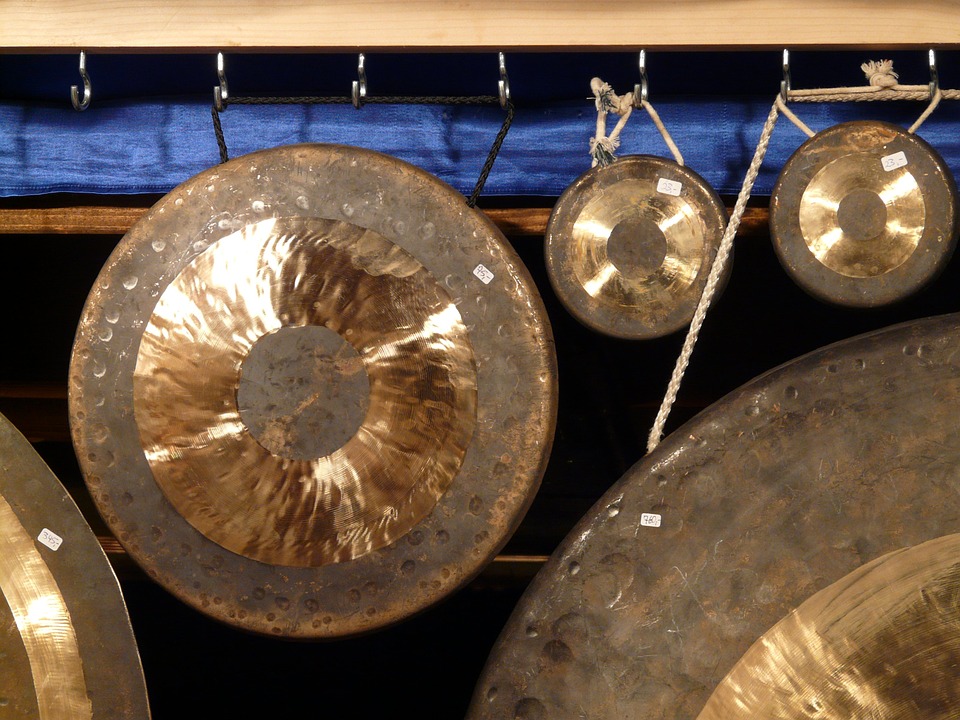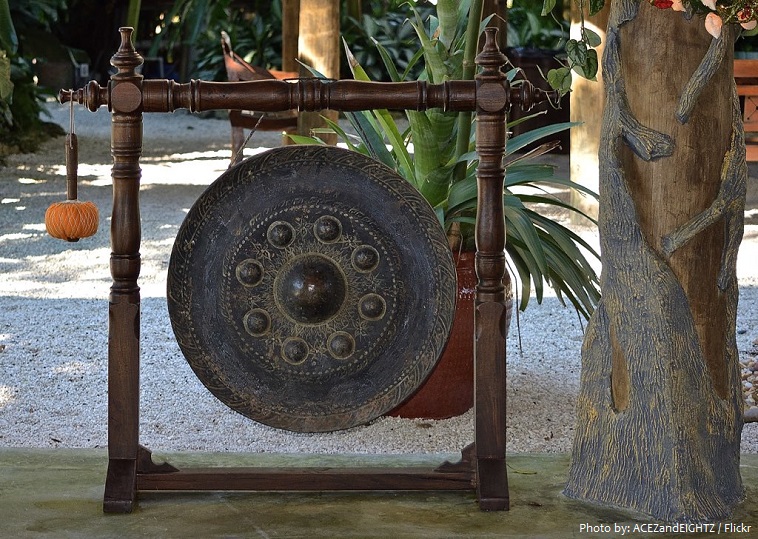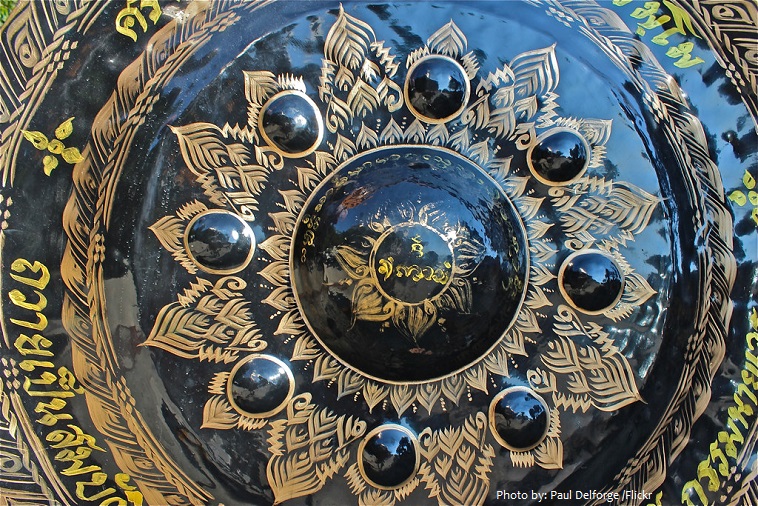
A gong is an East and Southeast Asian musical percussion instrument.
It is a bowl-shaped, circular metal disc which a person hits with a mallet or thick padded stick.
Its vibrations issue from the centre, in contrast to bells, which vibrate principally at the rim.
Gongs produce two distinct types of sound. A gong with a flat surface gives a “crash” rather than a tuned note. In Indonesian gamelan ensembles, some gongs are made to give a beat note in the range from about 1 to 5 Hz. The use of the term “gong” for both these types of instrument is common.
Gongs vary in diameter from about 50 to 150 cm (20 to 60 inches).

They are made of a bronze alloy composed of a maximum of 22 parts tin to 78 parts copper, but in many cases the proportion of tin is considerably less. This alloy is excessively brittle when cast and allowed to cool slowly, but it can be tempered and annealed in a peculiar manner to alleviate this.
When suddenly cooled from red heat, the alloy becomes so soft that it can be hammered and worked on the lathe then hardened by reheating. Afterwards, the gong has all of the qualities and timbre of the Chinese instruments.
Gongs broadly fall into one of three types:
• Suspended gongs are more or less flat, circular discs of metal suspended vertically by means of a
cord passed through holes near to the top rim.
• Bossed gongs have a raised centre boss, or knob, and are often suspended and played horizontally.
• Bowl gongs are bowl-shaped and rest on cushions. The latter may be considered a member of the bell category. Gongs are made mainly from bronze or brass but there are many other alloys in use.

European orchestras often called flat gongs “tam-tam” and bossed gongs “Gong”.
It is presumed by historians that gongs were made and used before the 2nd millennium BC.
They are the oldest and most genuine musical instruments of South Eastern Asia.
Gongs are pictured in China in the 6th century AD and were used in Java by the 9th century.
It is believed that Java, Annam, Burma, and China were the main gong producing centers. It is known that these centers produced at least seven gong forms and corresponding sound-structures. Therefore,
gongs have for a long time been at the center of thoughtful system of sound and music.

Gong making in Asia, like bell making in Medieval Russia, was a true ancient family secret. Gong makers’ knowledge was considered so set-apart, that they believed the making of a successful gong requires the assistance of higher powers. The process of gong making is so intense that gong artisans understood they were expose to powerful forces that most people are never exposed to.
Gongs and gong bowls in the Tibetan spiritual tradition have the deepest links with the cosmos and the spiritual world.
The instrument prominently features in traditional Chinese, Japanese, Korean, Filipino, Tibetan, Thai, Vietnamese, and Burmese music ensembles.
In the 18th century, gongs attracted the attention of European classical composers.

François Joseph Gossec was the first composer to include a gong in Western symphonic music. In his 1791 funeral march for the Count of Mirabeau, Gossec included a tam-tam—a suspended gong, also known as a chau gong or Chinese gong.
Classical composers such as Hector Berlioz, Richard Wagner, and Peter Ilyich Tchaikovsky likewise incorporated the tam-tam into their compositions and helped introduce it to symphony orchestras.
The word “gong” is Javanese.

For centuries, a gong was a symbol of success and status among Asian families – and still is to a degree.
The largest gong measures 5.15 m (16.8 ft) in diameter. It was made by Shanxi Baodi Real Estate Development CO. Ltd and displayed at the Third China Taiyuan International Cooked Wheaten Food Festival, Shanxi Province, China on 8 September 2005. The gong was made of copper and weighed 568 kg (1252 lb).
A bowl-shaped, center mounted, electrically controlled gong is standard equipment in a boxing ring. Commonly referred to as “the gong”, it is struck with a hammer to signal the start and end of each round.